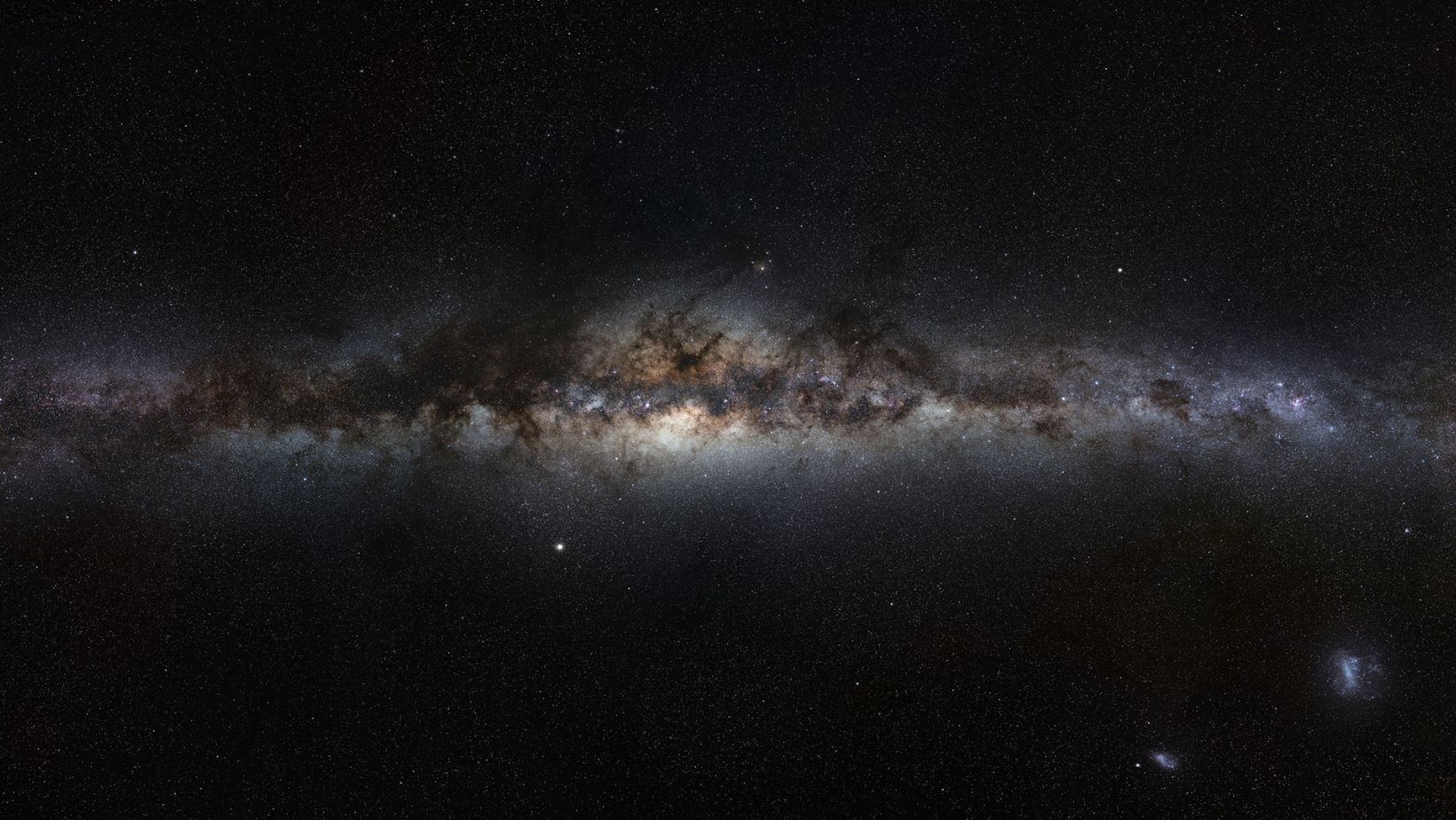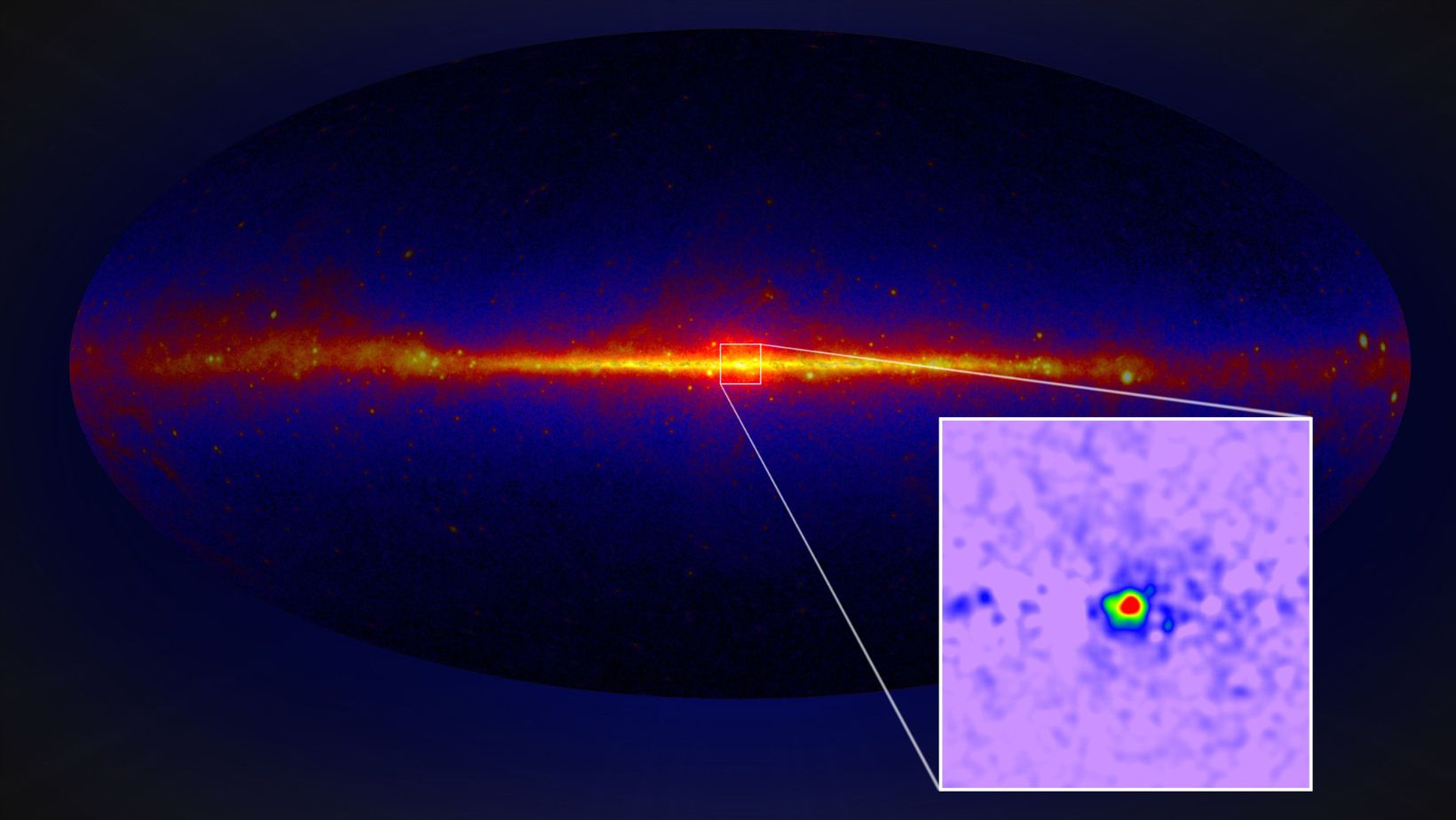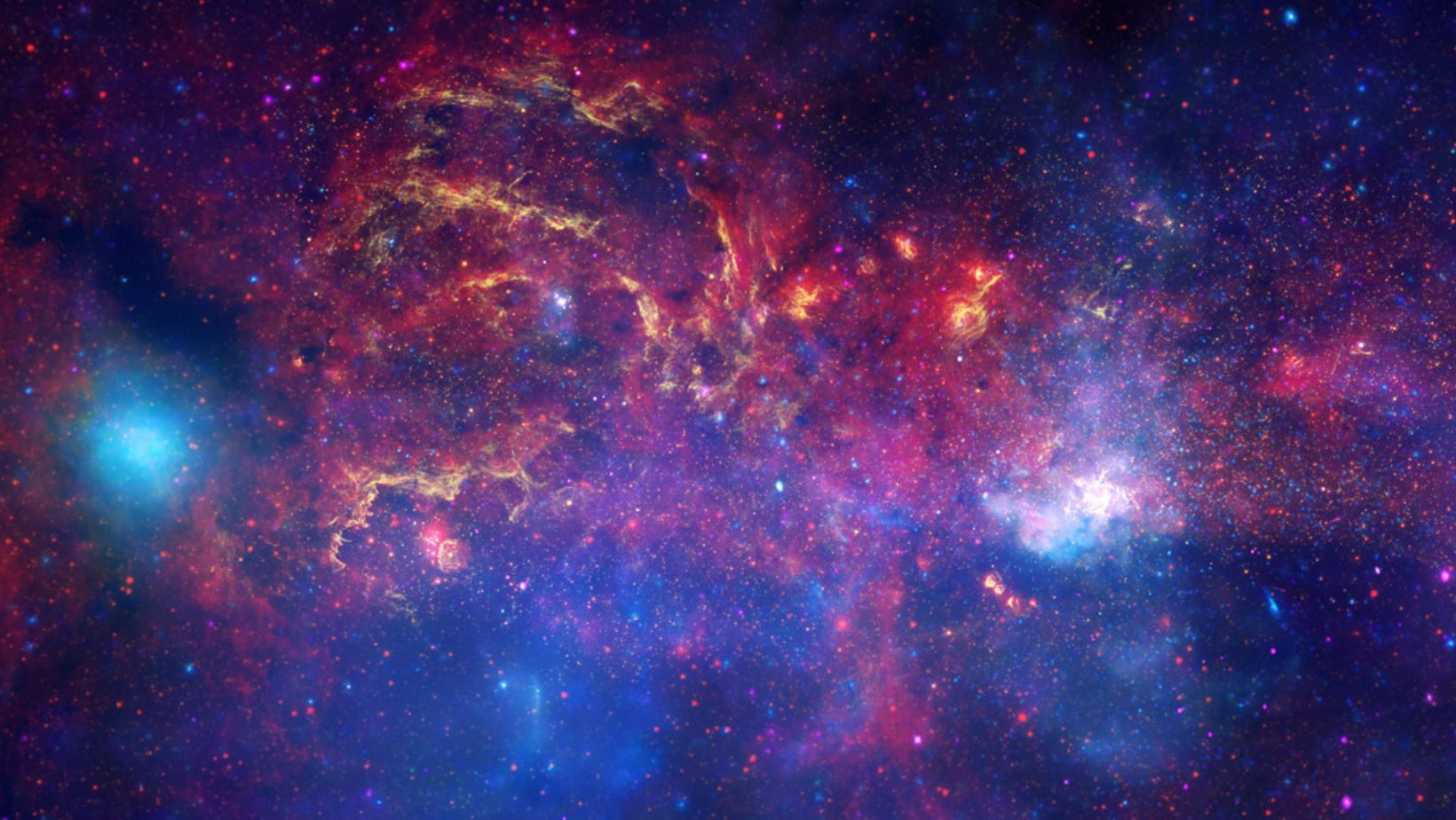The Milky Way is a vast, swirling spiral of stars, dust, and gas, stretching across the cosmos. At its heart lies the Galactic Center, a region that has fascinated scientists and stargazers alike. This dense core, shrouded in mystery, holds secrets about our galaxy’s formation and its potential future. While we know it houses a supermassive black hole, much of what lies at the center remains a puzzle. What’s really happening there? Why is it so elusive? Let’s explore the mystery of the Galactic Center and uncover what makes this cosmic core so intriguing.
What is the Galactic Center?

The Galactic Center refers to the central region of our Milky Way galaxy. It is located approximately 26,000 light-years away from Earth, in the direction of the constellation Sagittarius. At this core lies a supermassive black hole called Sagittarius A*, which has a mass around four million times that of our Sun. This black hole exerts a strong gravitational pull, influencing the motion of stars and other objects nearby.
The Galactic Center is a dense area, filled with stars, gas, and dust. It is home to many of the galaxy’s most massive and oldest stars. Despite being so distant, scientists study the galactic core using radio waves, X-rays, and infrared radiation to understand its structure and behavior. Observations reveal that the center is a dynamic and complex region, critical to understanding the evolution of the Milky Way.
In addition to Sagittarius A*, the Galactic Center contains various fascinating features. These include star clusters, nebulae, and cosmic dust clouds. This region plays a pivotal role in the galaxy’s overall structure, influencing its rotation and the distribution of mass. Understanding the Galactic Center helps scientists learn about galaxy formation and the nature of black holes.
A Black Hole at the Core: Fact or Fiction?
The existence of a supermassive black hole at the center of our galaxy, known as Sagittarius A*, has been a topic of scientific inquiry for decades. Evidence strongly supports its existence, with astronomers observing the movement of stars near the galactic core. These stars’ rapid orbits suggest the presence of a massive, invisible object exerting a powerful gravitational pull. While Sagittarius A* cannot be directly seen, its influence on surrounding matter provides compelling evidence for its existence.
In recent years, groundbreaking observations have further confirmed this theory. The Event Horizon Telescope collaboration captured the first-ever image of a black hole in 2019, providing indirect support for the concept of black holes. The behavior of matter and radiation near Sagittarius A* shows characteristics typical of a supermassive black hole. Such evidence has led to widespread scientific consensus that a black hole is indeed at the heart of our galaxy.
However, despite the evidence, many questions remain. The precise nature and behavior of Sagittarius A* are still subjects of active research. Understanding this cosmic giant could unlock more secrets about black holes and their role in the universe’s formation. For now, Sagittarius A* remains a fascinating and mysterious force at the center of our galaxy.
The Strange Phenomena of the Galactic Center
The galactic center, located in the heart of our Milky Way galaxy, is a region full of strange phenomena. It is known for emitting high-energy radiation, which scientists have studied to understand its origins. This radiation is often in the form of X-rays and gamma rays, emitted by objects like black holes, neutron stars, and supernova remnants. The intense gravitational forces in this area cause matter to heat up and release vast amounts of energy.
Another fascinating feature of the galactic center is its unusual star formations. These formations are different from those found in other parts of the galaxy, with stars clustering together in dense regions. Many of these stars are in close proximity to the supermassive black hole at the center. The dynamics of this environment lead to unusual behaviors and rapid star formation.
Mysterious energy emissions also arise from this region. Scientists have detected cosmic rays and other energetic particles that escape from the galactic center. These emissions contribute to the unique nature of the center, making it a key area of study. Understanding these phenomena helps unlock the secrets of the universe’s most extreme environments.
Cosmic Jets: The Power of the Galactic Core
Cosmic jets are powerful streams of charged particles ejected from the vicinity of supermassive black holes at the centers of galaxies. These jets originate when matter is pulled toward the black hole but doesn’t get swallowed immediately. Instead, it accelerates and spirals around the black hole, forming a structure known as an accretion disk. The intense gravitational forces cause some of this matter to shoot out along the black hole’s poles at nearly the speed of light.
The jets are made up of plasma, a highly energized state of matter, and can extend millions of light-years into space. As these jets travel outward, they impact the surrounding galaxy in significant ways. They can heat surrounding gas, prevent new star formation, and even alter the shape of the galaxy. The energy released by these jets plays a crucial role in shaping the evolution of galaxies.
These jets also contribute to the formation of galactic clusters, pushing and shaping the hot gas within them. While the process remains complex, understanding cosmic jets helps astronomers study galaxy growth and black hole behavior. It offers insights into the forces shaping the universe at its most extreme scale.
Dark Matter and the Galactic Center

Dark matter is an invisible substance that makes up about 27% of the universe. It cannot be seen directly, but its presence is inferred through its gravitational effects. The Milky Way’s core, or galactic center, is a region of intense gravitational forces, and dark matter may play a crucial role here. Theories suggest that dark matter could be concentrated in the center, influencing the motion of stars and gas.
Scientists believe that the gravitational effects of dark matter are essential to understanding the behavior of our galaxy. The stars near the galactic center move faster than expected, indicating the presence of unseen mass. This mass is not visible in traditional observations but could be due to dark matter. Understanding its distribution in the galactic center could unlock more about both dark matter and the Milky Way’s formation.
Some theories propose that dark matter clumps in specific areas, including the galactic center, where it could affect the rotation of galaxies. Theories also explore whether dark matter interacts with other cosmic phenomena like black holes. Research into this area is ongoing, with astronomers using advanced instruments to probe the galactic core. Studying these gravitational effects may reveal the true nature of dark matter.
Star Clusters: The Galactic Heart’s Busy Neighborhood
At the heart of our galaxy lies a dense concentration of stars known as the galactic center. Star clusters are tightly packed groups of stars, often found in this region. These clusters can contain hundreds to thousands of stars, all bound together by gravity. The intense gravity causes these stars to orbit each other in complex patterns.
Studying star clusters helps scientists learn more about the formation and evolution of stars. The age, composition, and movement of stars in clusters give clues to the processes that created them. These clusters are often used as natural laboratories for understanding stellar lifecycles. By observing the differences between young and old clusters, astronomers can track how galaxies like ours evolve.
Star clusters are also crucial for understanding the dynamics of the galactic center itself. The central region of the Milky Way is known for its high star density and its massive black hole. The interaction between star clusters and the black hole can offer insights into the galaxy’s growth and future. Ultimately, these galactic neighborhoods play a key role in unraveling the mysteries of our universe.
The Role of Gas and Dust in the Galactic Core
Gas and dust play crucial roles in the dynamics of the galactic core, particularly around supermassive black holes. These materials are drawn toward the black hole by its immense gravitational pull, forming accretion disks. The gas, mostly hydrogen and helium, spirals inward, heating up and emitting radiation in the process. This accretion process can power intense emissions, including X-rays, making galactic cores highly energetic.
Gas clouds near the galactic center can feed the supermassive black hole by continuously supplying material. As the gas falls into the black hole, it becomes compressed and heated, often forming jets of high-energy particles that shoot out from the poles of the black hole. This process contributes to the overall activity in the galactic core. Additionally, the interaction between gas and dust can influence the formation of stars in the region.
Dust, though not as dense as gas, affects how we observe the galactic center. Dust clouds obscure our view of the core in visible light, making it difficult to study directly. However, by using infrared and radio waves, astronomers can peer through the dust. Understanding the role of dust helps refine our models of black hole activity and galactic evolution.
The Future of the Galactic Center: What Will We Discover?

The Galactic Center is an area of intense interest for astronomers and space scientists. Upcoming space missions and advanced telescopes are set to unlock its many secrets. Instruments like the James Webb Space Telescope and the Event Horizon Telescope are designed to observe this region in unprecedented detail. These missions will help scientists study the supermassive black hole, Sagittarius A*, and its surroundings.
These new technologies will allow astronomers to investigate how stars and matter behave near the black hole. They may also reveal hidden structures, such as dark matter or unusual cosmic phenomena. One exciting possibility is discovering new types of stars or even entire star systems that have never been observed. With clearer images and better data, scientists will also examine the role of the Galactic Center in shaping our galaxy’s formation.
Speculations about the future are filled with exciting potential discoveries. There is hope that we may uncover new insights into how black holes influence galaxy evolution. Some believe we might even find signs of extraterrestrial life or advanced civilizations near the center. As technology advances, the Galactic Center promises to remain a rich area for exploration and groundbreaking discoveries.
Conclusion: The Galactic Center Mystery: What Lurks at the Heart of the Milky Way?
The Galactic Center remains one of the most enigmatic regions in the universe. While we have made significant strides in understanding its general structure and the presence of a supermassive black hole, many questions remain unanswered. The exact nature of dark matter and the dynamics within this dense cosmic core are still shrouded in mystery. Ongoing research, including advanced telescopes and deep-space observations, continues to push the boundaries of our knowledge. As technology advances, the quest to unlock the secrets of the Galactic Center will persist, potentially revealing profound insights about the universe’s origins and future.
FAQs About The Galactic Center Mystery: What Lurks at the Heart of the Milky Way?
What is the Galactic Center of the Milky Way?
The Galactic Center refers to the very core of our galaxy, the Milky Way, where a highly dense region of stars, gas, and dust exists. It is located about 26,000 light-years away from Earth and is thought to house a supermassive black hole at its center.
Why is the Galactic Center so difficult to study?
The Galactic Center is obscured by thick clouds of gas and dust that block visible light, making it challenging to observe directly. Astronomers rely on other wavelengths, like infrared and radio waves, to study this region and reveal its secrets.
What evidence exists for a supermassive black hole at the Galactic Center?
Observations of star movements near the center of the Milky Way suggest that they are orbiting around an unseen, massive object. These movements, coupled with X-ray emissions and gravitational wave data, strongly support the presence of a supermassive black hole, named Sagittarius A*.
Are there other mysterious objects or phenomena in the Galactic Center?
Beyond the supermassive black hole, the Galactic Center contains fascinating phenomena like high-energy radiation, star clusters, and potentially dark matter concentrations. Some believe that the center might even harbor exotic objects, such as primordial black holes, adding to the mystery.
How might studying the Galactic Center help us understand the broader universe?
Investigating the Galactic Center provides insights into the formation and evolution of galaxies, supermassive black holes, and the complex interactions between stars and dark matter. It could also shed light on the origins of our own solar system and the role black holes play in galaxy dynamics.

